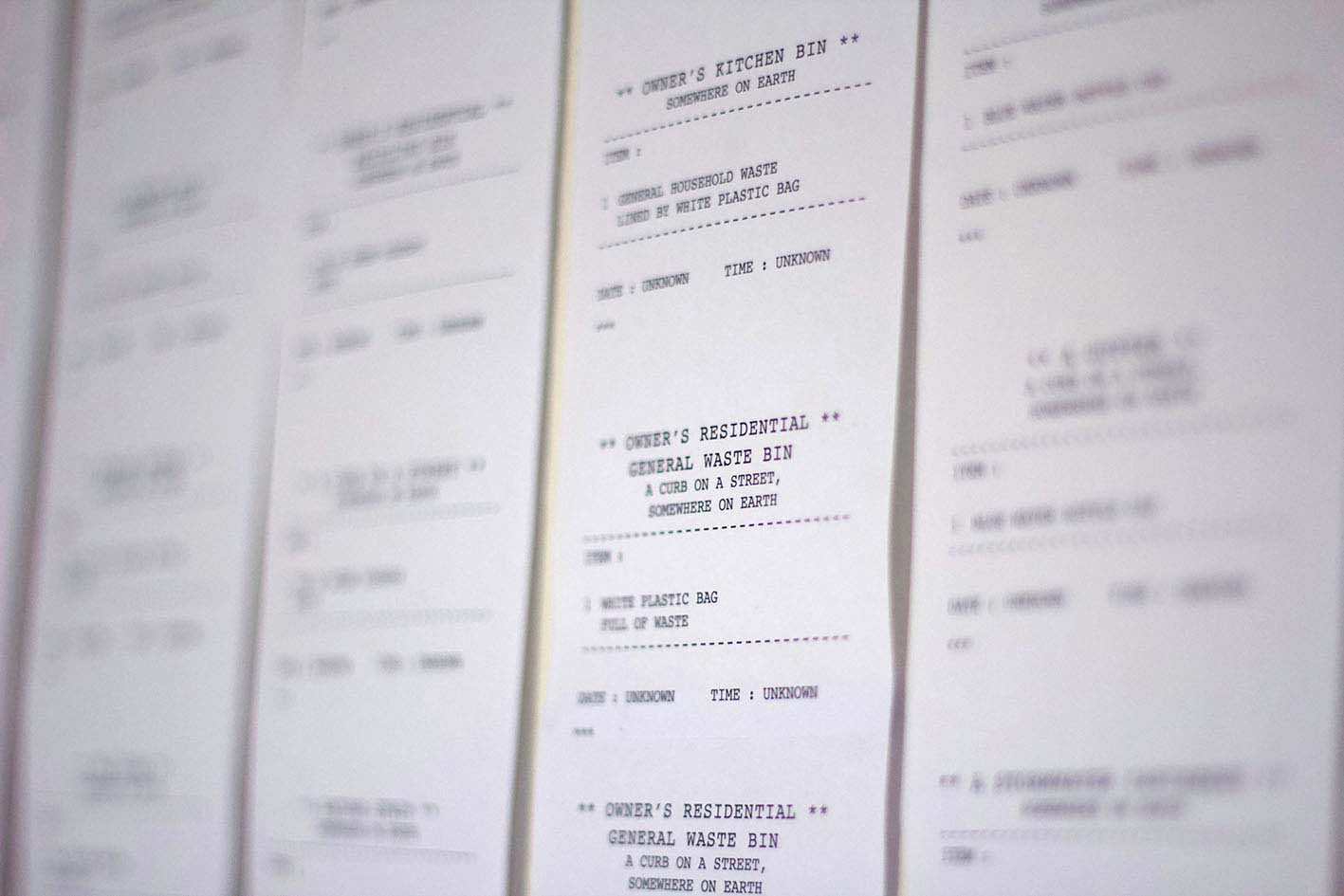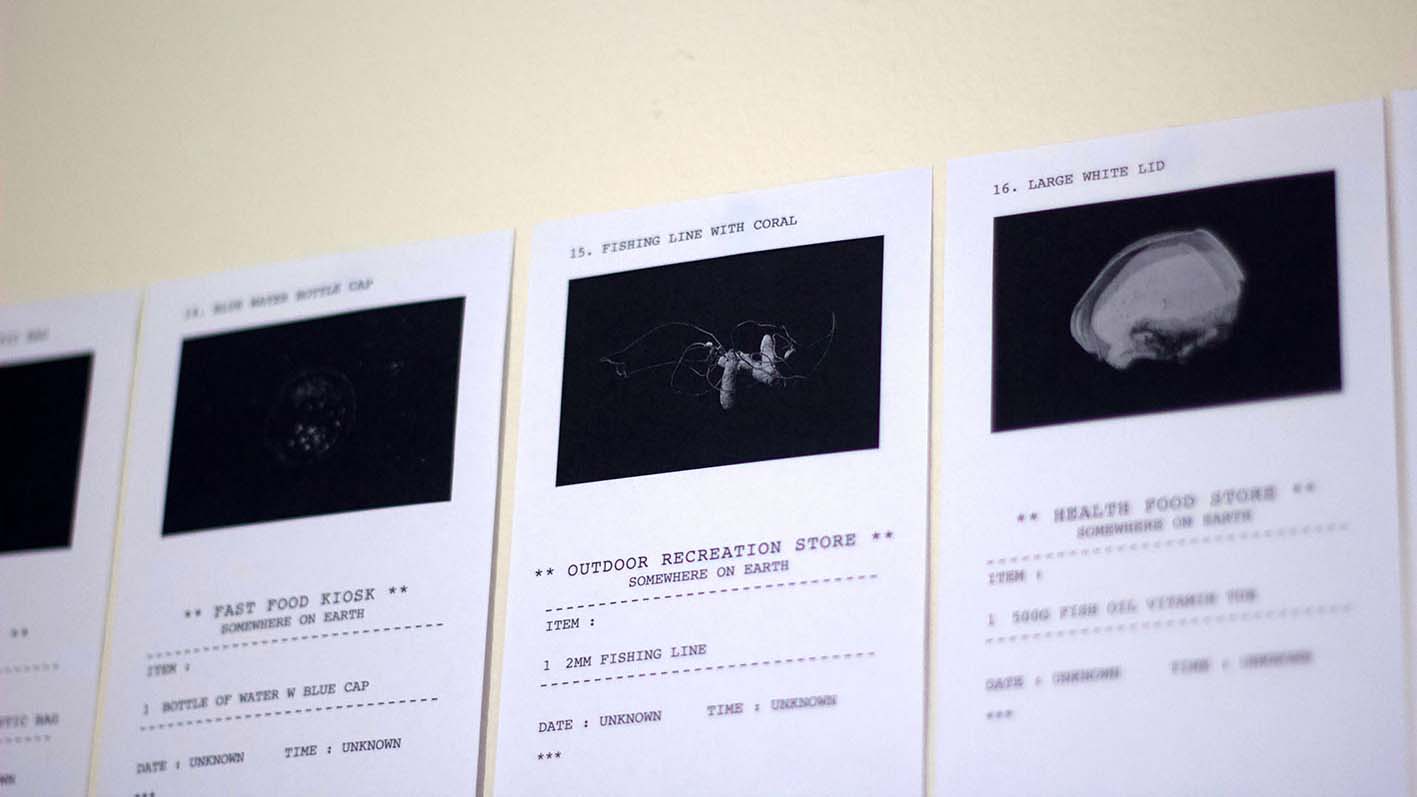Experiment
From here to there

Aim
This experiment aimed to tell a more abstracted and less anthropomorphised story about the life of plastic. It used fragmented storytelling as a way of visualising the journeys of time and use for the warped plastics.
Precedents
It refines on storytelling methods used in Experiment: The toothbrush. Rather than using personas and overt anthropomorphism as lenses, this experiment recorded the journeys of these plastics to bring into awareness the post-disposal spaces plastics are often relegated to.
Methods


f how they ended up in the ocean and their journey after humans.
The formula for crafting these journeys considered:
- The type of store they were bought from as a consumer item
- How they were discarded, the circumstances surrounding it and where this happened (e.g. a home or public building)
- How they travelled from their place of disposal to their next location
- How they travelled from that location to the ocean
- Their collection by Eco Barge
- Their collection by me
These stories were intentionally left open ended. The question marks after the record of them in my living room ask ‘what next?’ and highlight that the journey for plastic never really ends (Figure 36).
The form of the receipt was chosen to visualise these journeys as they are already artefacts that record the moving of an object from one place to go to another. They document the place that an object comes from (such as a library book, or groceries from a supermarket), but not where they are going, much like these warped plastics. This metaphor of the receipt sought to communicate that all matter is redistributed rather than disintegrating (both physically and chemically).



Reflection
Feedback from supervisors for this experiment cited that the choice of presentation was perhaps too text heavy and uniform, making it uninviting for consumers to engage with in detail. This experiment made a statement about the overall image rather than each individual story.
The act of generating stories which traced the past of these plastics all the way up to my collection of them did, however, prompt consideration of where they might go next after being in my care. Questions about what conditions would make them leave my care also surfaced—it was highly unlikely that I would ever discard of these plastics, so the only reasonable explanation was that they would leave my care after I die. This raised further considerations about what these plastics would be doing in the time between the completion of this research project and my eventual demise, and reiterated an understanding that there is no solution to the dilemma of what to do with our waste; the systems we operate in (such as recycling, collecting from beaches, personal collections and museum collections) only seem to delay the inevitability of plastic ending up in landfill.
The act of generating stories which traced the past of these plastics all the way up to my collection of them did, however, prompt consideration of where they might go next after being in my care. Questions about what conditions would make them leave my care also surfaced—it was highly unlikely that I would ever discard of these plastics, so the only reasonable explanation was that they would leave my care after I die. This raised further considerations about what these plastics would be doing in the time between the completion of this research project and my eventual demise, and reiterated an understanding that there is no solution to the dilemma of what to do with our waste; the systems we operate in (such as recycling, collecting from beaches, personal collections and museum collections) only seem to delay the inevitability of plastic ending up in landfill.
Insights
Understanding that these plastics would only be ‘protected’ during my lifetime led me to attribute a custodianship of the collected plastics to myself. This allowed me to recognise the limitations of collecting these plastics, in that they would persist to exist beyond my lifespan. Giving custodianship of the warped plastics was thus a potential strategy to connect consumers to tangibly recognise and visualise the nonhuman and multi-generational lifespan of plastic, and this is explored further in later experiments.
It was particularly this more fragmented storytelling form that facilitated this visualisation of the longevity of plastic. Considering the future of the plastic in a cause-and-effect and step-by-step journey map helped to slowly build towards considerations of their deep time futures. This is hence also a potential method for providing consumers access to understandings of longevity.
Building on ideas of nonhuman longevity, I also wanted to speculate and unpack further how these specific warped plastics might exist—and where—after my generation is no longer around. Exploring a world where we are no longer alive and present could prove to generate conversation and make concepts of the longevity and persistent existence of plastic waste tangible to consumers.
It was particularly this more fragmented storytelling form that facilitated this visualisation of the longevity of plastic. Considering the future of the plastic in a cause-and-effect and step-by-step journey map helped to slowly build towards considerations of their deep time futures. This is hence also a potential method for providing consumers access to understandings of longevity.
Building on ideas of nonhuman longevity, I also wanted to speculate and unpack further how these specific warped plastics might exist—and where—after my generation is no longer around. Exploring a world where we are no longer alive and present could prove to generate conversation and make concepts of the longevity and persistent existence of plastic waste tangible to consumers.